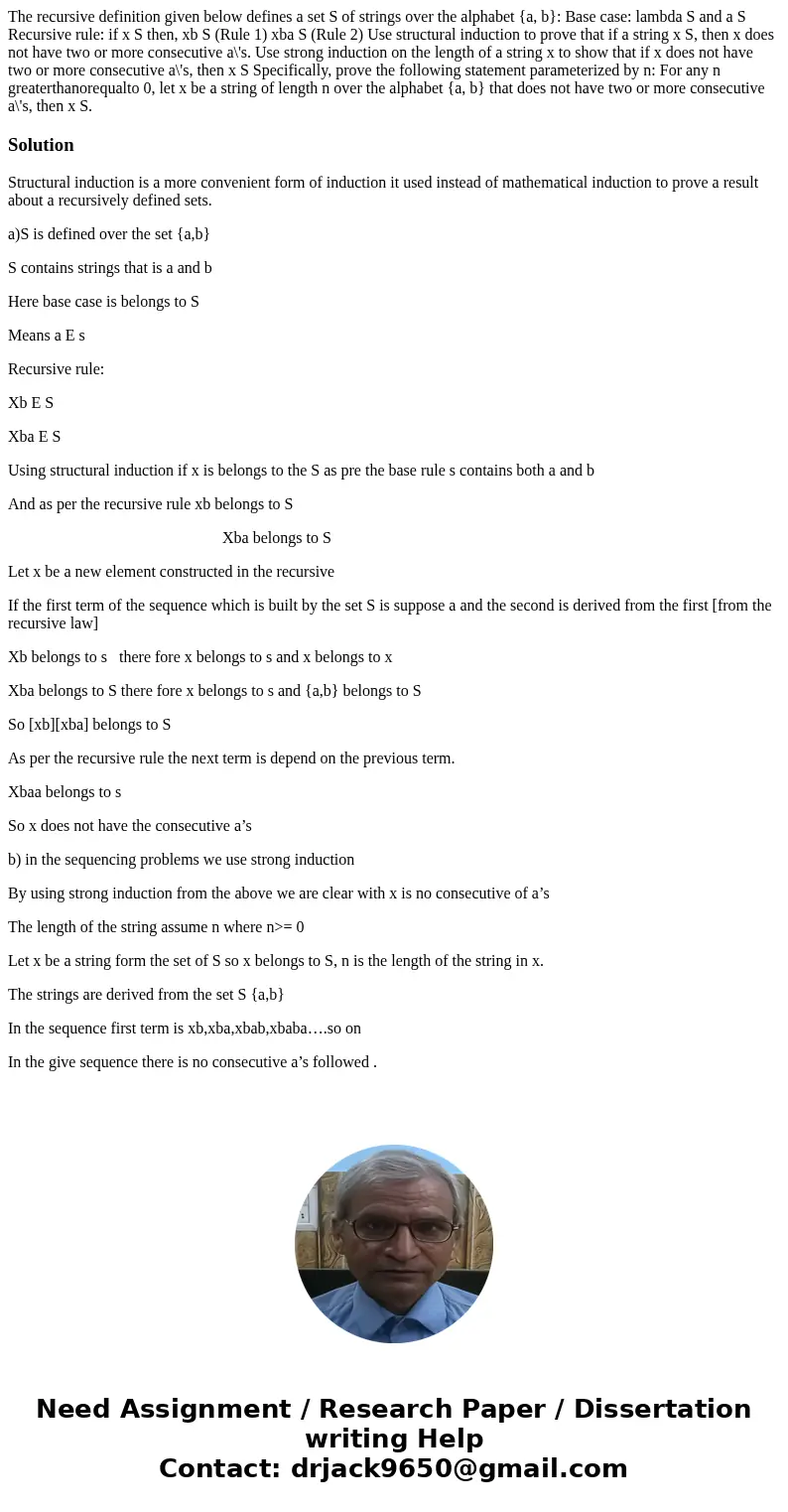The recursive definition given below defines a set S of stri
Solution
Structural induction is a more convenient form of induction it used instead of mathematical induction to prove a result about a recursively defined sets.
a)S is defined over the set {a,b}
S contains strings that is a and b
Here base case is belongs to S
Means a E s
Recursive rule:
Xb E S
Xba E S
Using structural induction if x is belongs to the S as pre the base rule s contains both a and b
And as per the recursive rule xb belongs to S
Xba belongs to S
Let x be a new element constructed in the recursive
If the first term of the sequence which is built by the set S is suppose a and the second is derived from the first [from the recursive law]
Xb belongs to s there fore x belongs to s and x belongs to x
Xba belongs to S there fore x belongs to s and {a,b} belongs to S
So [xb][xba] belongs to S
As per the recursive rule the next term is depend on the previous term.
Xbaa belongs to s
So x does not have the consecutive a’s
b) in the sequencing problems we use strong induction
By using strong induction from the above we are clear with x is no consecutive of a’s
The length of the string assume n where n>= 0
Let x be a string form the set of S so x belongs to S, n is the length of the string in x.
The strings are derived from the set S {a,b}
In the sequence first term is xb,xba,xbab,xbaba….so on
In the give sequence there is no consecutive a’s followed .

 Homework Sourse
Homework Sourse